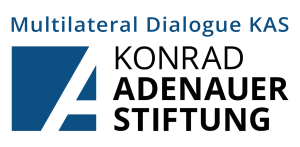India formally declared itself a nuclear-weapon state after two rounds of nuclear tests on 11 and 13 May 1998. In response, Pakistan conducted its own tests on 28 and 30 May 1998. Neither India nor Pakistan were members of the NPT and were outside its non-proliferation obligations. The tests were also conducted after the 1 January 1967 cut off date for official nuclear weapon state (NWS) status. As of January 2021, the estimated size of the Indian arsenal was 156 warheads and Pakistan’s was 165.
Why It Matters
India and Pakistan started their nuclear programmes ostensibly for peaceful purposes. The US, the USSR, Canada, China, and France provided technical nuclear assistance to the two states under the auspices of the newly-established IAEA.
In the 1950s under the leadership of Jawaharlal Nehru, India was the first to advocate against nuclear testing. Its military nuclear programme, launched in 1972, followed its mauling in its conflict with China in 1962, as well as China’s first nuclear test in 1964. India also demanded a permanent seat on the UN Security Council and saw itself as a leader of the non-aligned movement, and deemed nuclear weapons symbols of strength and status. India conducted its first nuclear test “Smiling Buddha,” on 18 May 1974, for “peaceful” scientific or industrial purposes. Its subsequent militarised tests reflected changing regional circumstances - increased Chinese power, and the build-up of Pakistan’s nuclear capabilities.
After the Indo-Pakistani war of 1965 or the Second Kashmir War, Pakistan’s Minister of Foreign Affairs, Zulfikar Ali Bhutto, is reportet to have declared: “If India builds the bomb, we will eat grass or leaves, even go hungry, but we will get one of our own.” Pakistan launched its military nuclear programme in 1972 following defeat in the 1971 war with India, and acknowledgement of its vulnerability in the face of India’s superior conventional military forces. In the 1970s Pakistan had proposed establishing a South Asia nuclear weapon free zone (NWFZ) as well as joining the NPT with India as non nuclear weapon states. Neither proposal was accepted because India did not want to become a part of what it deemed an unequal system set up by the NPT.
Further materials:
https://www.nti.org/analysis/articles/pakistan-nuclear/
https://www.nti.org/analysis/articles/india-nuclear/
https://thebulletin.org/2021/11/whats-known-and-not-known-about-indias-nuclear-weapons-budget/
https://www.brookings.edu/blog/order-from-chaos/2021/09/28/the-agonizing-problem-of-pakistans-nukes/




